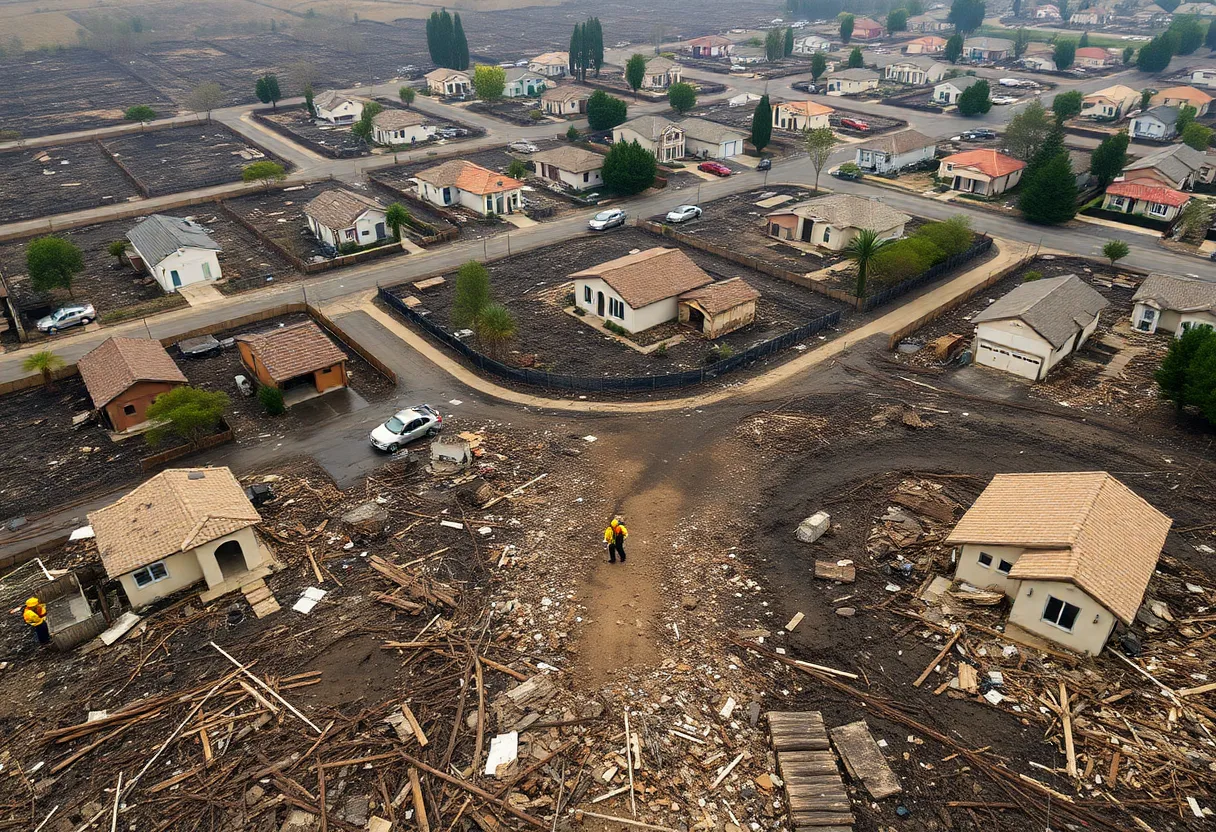News Summary
California faces a monumental challenge in cleaning up after devastating wildfires that have caused extensive destruction and demand careful hazardous material removal.
California Wildfires Ignite Hazardous Cleanup Challenges
The Devastation
In the wake of California’s recent wildfires, the scale of destruction is staggering. As flames ravaged Los Angeles and surrounding areas, they left a trail of devastation in their wake. At least 11 lives have been lost, thousands of structures have been reduced to ash, and the landscape has been forever altered. With thousands of acres scorched, the focus must now shift to recovery—a monumental task that involves more than just clearing debris.
Complex Cleanup Operations
The cleanup process in the areas of Altadena and Pacific Palisades is anticipated to be one of the most complex debris removal efforts the country has ever seen. Each ash pile represents a mix of personal belongings and hazardous materials like asbestos, gasoline, and lead. These remnants transform every property into its own hazardous waste cleanup site, mandating a specialized and methodical approach to ensure public safety and environmental protection.
Timeline Concerns
Fire victims are anxious to begin the rebuilding process; however, many are becoming increasingly frustrated with the delays posed by the necessary hazardous material clearance. While some lots may be cleared in a matter of days, the comprehensive clearance for entire properties could stretch up to 18 months—a timeline that is causing distress among homeowners longing to see their communities revitalized. The potential for expedited removal has been brought up, with suggestions that the time frame could shrink to as little as 18 days in some instances.
Dangers Lurking in Debris
One of the most pressing concerns during this cleanup is the presence of lithium-ion batteries. As electric and hybrid vehicles were often parked in driveways or garages, many of these hazardous batteries remain within the debris, posing significant dangers. These batteries can ignite and explode if damaged, with residual heat from the recent fires capable of causing spontaneous combustion days, weeks, or even months later.
The Environmental Protection Agency (EPA) has highlighted that they may be facing the largest lithium-ion battery pickup in history during this recovery effort. The thorough removal of these batteries is not merely a precaution; it’s an essential part of protecting the health and safety of residents looking to return home.
Phased Approach to Recovery
The debris removal will occur in phases. Currently, Phase 1 is underway, which focuses exclusively on the removal of hazardous materials, employing over 1,000 personnel to ensure a swift and efficient process. This stage requires utmost caution, as even seemingly intact lithium-ion batteries can off-gas toxic substances that pose risks to returning residents.
After the conclusion of Phase 1, Phase 2 will commence—this will involve comprehensive debris removal orchestrated by the Federal Emergency Management Agency (FEMA). At this stage, officials will ensure that hazardous household waste such as oils, paints, pesticides, and propane tanks are dealt with adequately.
Collaboration is Key
The recovery efforts in California after these wildfires have become a monumental collaborative effort involving local, state, and federal partners. Under an executive order, the EPA has been directed to expedite the cleanup of hazardous materials, highlighting the urgency of their mission. Residents have the option to participate in the federal removal program or hire their own contractors, allowing flexibility while adhering to crucial safety protocols.
Conclusion
As California grapples with the aftermath of these devastating wildfires, the road to recovery is fraught with complexities and potential hazards. Clearing toxic remnants from properties may be one of the biggest cleanup challenges in the nation, but the focus remains clear: ensure the safety of residents and provide pathways for them to begin rebuilding their lives. The critical work ahead stands as a testament to resilience amid adversity, as communities band together to restore homes and heal from this catastrophe.
Deeper Dive: News & Info About This Topic
HERE Resources
Wildfires Ravage Los Angeles: The Hidden Danger of Asbestos Exposure
Retired Radio Engineer’s Asbestos Death Highlights Risks
Inquest Launched Following the Death of Former Factory Worker Linked to Asbestos Exposure
Great-Grandfather from Swindon Dies from Asbestos-Related Disease
EE Kilburn Store Closure Due to Asbestos Discovery
Asbestos Awareness Takes Center Stage in Parliament
Man Fined Over £20,000 for Illegally Disposing of Asbestos Waste
Minnesota Court Denies Company Immunity in Mesothelioma Case
Cholota’s Asbestos Case Continues to Unravel
Major Lawsuit Looms Over Johnson & Johnson’s Talcum Powder



















